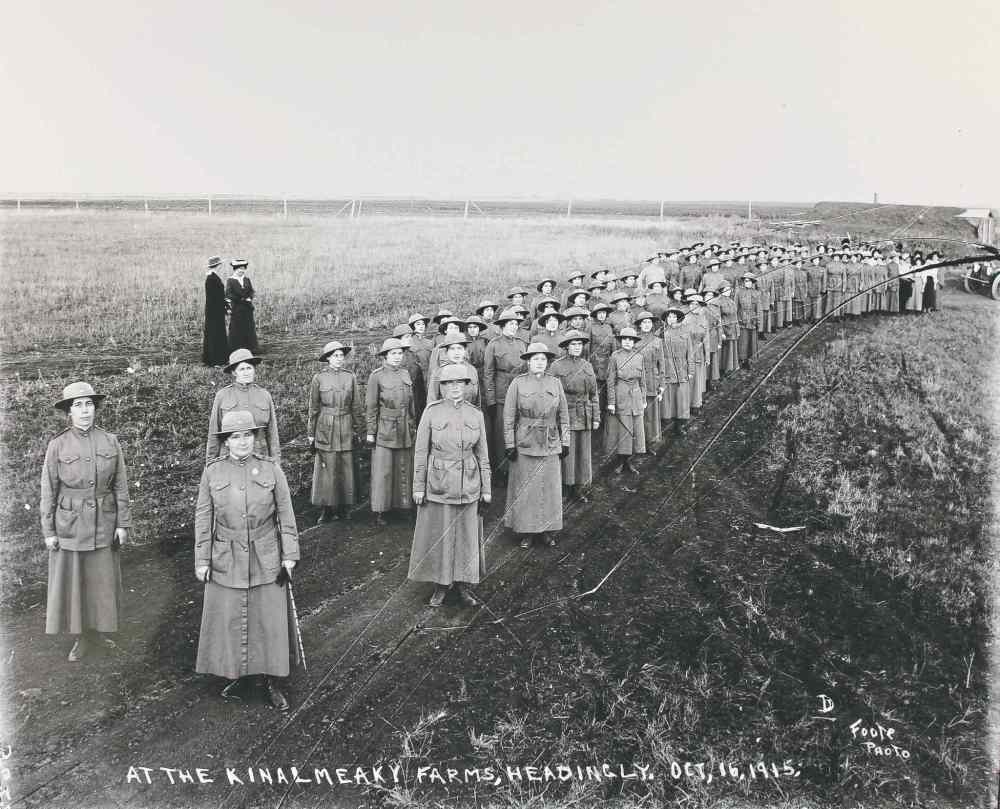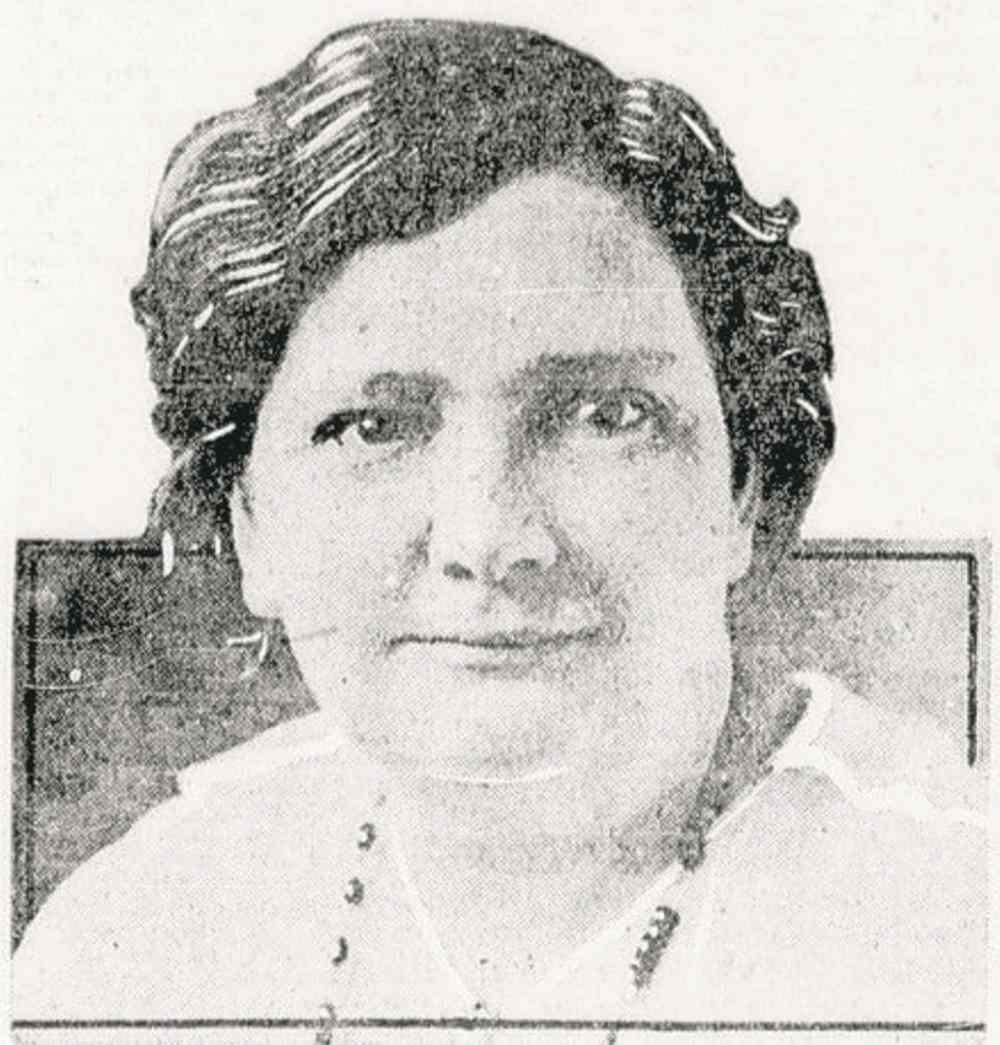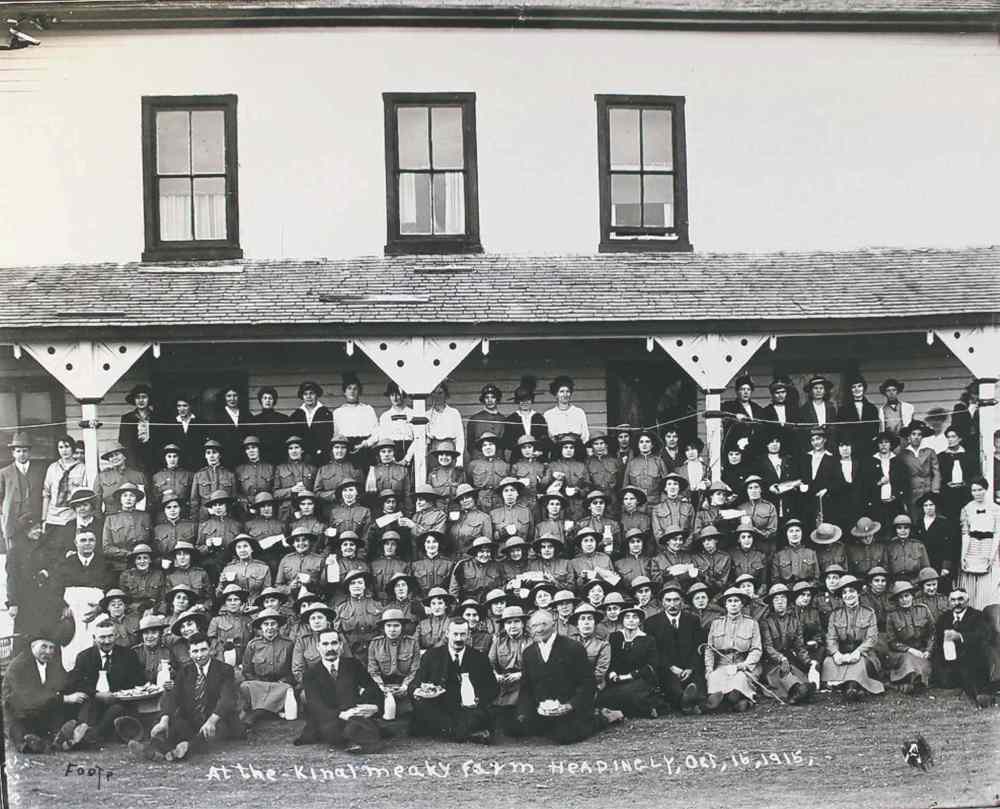Physician prepared women’s volunteer unit for war
Doctor's orders
Advertisement
Read this article for free:
or
Already have an account? Log in here »
To continue reading, please subscribe:
Monthly Digital Subscription
$0 for the first 4 weeks*
- Enjoy unlimited reading on winnipegfreepress.com
- Read the E-Edition, our digital replica newspaper
- Access News Break, our award-winning app
- Play interactive puzzles
*No charge for 4 weeks then price increases to the regular rate of $19.95 plus GST every four weeks. Offer available to new and qualified returning subscribers only. Cancel any time.
Monthly Digital Subscription
$4.99/week*
- Enjoy unlimited reading on winnipegfreepress.com
- Read the E-Edition, our digital replica newspaper
- Access News Break, our award-winning app
- Play interactive puzzles
*Billed as $19.95 plus GST every four weeks. Cancel any time.
To continue reading, please subscribe:
Add Free Press access to your Brandon Sun subscription for only an additional
$1 for the first 4 weeks*
*Your next subscription payment will increase by $1.00 and you will be charged $16.99 plus GST for four weeks. After four weeks, your payment will increase to $23.99 plus GST every four weeks.
Read unlimited articles for free today:
or
Already have an account? Log in here »
Hey there, time traveller!
This article was published 14/06/2015 (3861 days ago), so information in it may no longer be current.
Dr. Margaret Ellen Douglass became a household name in Winnipeg during the First World War for her efforts to organize a group of local women who almost found themselves fighting on the front lines.
Born in Stanley, N.B., in 1878, Douglass graduated from the University of Toronto with a medical degree in 1905. After a couple of years of post-graduate studies in London, Baltimore and New York City, she returned to her home province to start her practice, but soon left for Winnipeg.
She set up her home and practice in a two-storey house at 136 Sherbrook St. near the Misericordia Hospital. Her first Manitoba Free Press classified ad appeared in July 1909, announcing: “Formerly of New York Infirmary for Women and Children, specialist — obstetrics, diseases of women and children.”

Douglass was a gifted public speaker sought after by many organizations, such as the Women’s Christian Temperance Union, the Women’s Canadian Club, the University Women’s Club and the St. John’s Ambulance Association.
At many of her talks, she urged women to enter the field of medicine. Speaking to undergraduates at the University Women’s Club in March 1914, she admitted the profession meant hard work and long hours, but added it opened the door to gainful, independent employment most men could only dream of. This included a chance to travel the world with organizations such as the British Medical Corps and the Foreign Service.
If she encountered overt sexism, she did not let on. In 1914, she noted the “old-time prejudice” against female doctors, by both men and women, had all but disappeared, and that in her career she had “yet to meet any opposition” from male colleagues.
In December 1914, Douglass put her practice on hold to supervise the local St. John’s Ambulance Association when its commissioner was deployed overseas. It was an organization she would be associated with for the rest of her life.
Douglass felt strongly women had to be as prepared as men to mobilize for war. Under the auspices of St. John’s Ambulance, she began teaching emergency first-aid classes at telephone exchanges and other female-dominated workplaces.
The following year, she created the Women’s Rifle Club and secured the use of tunnels below the Industrial Bureau building on Main Street as a rifle range. At its official opening on Jan. 20, 1915, she fired the ceremonial first shot, impressing those in attendance by scoring a bull’s-eye.
The Women’s Rifle Club also taught women how to conduct security patrols and crowd control. The response was overwhelming, and in a matter of weeks the membership had to be capped at 150 until a new, outdoor range was opened at Sturgeon Creek that summer.
The club had a chance to show off its training during Patriotic Week in early July 1915. Instead of calling on the Winnipeg Police Department, which was already stretched thin, Douglass convinced organizers to let them handle security and crowd control for the numerous events and venues around the city. The club patrolled the sites — without firearms — by foot, car and horseback and ran a central security station.
Later that month, Dr. Ella Scarlett-Synge of Vancouver stayed with Douglass during a stopover en route to a Red Cross mission in Serbia. Scarlett-Synge and her sister, Evelina Haverfield, in Birmingham, England, created a Women’s Volunteer Force in their respective cities. They were reserve units trained to battle everything from a military-camp typhoid epidemic to enemy combatants.
To Douglass, such a force was the logical next step for the Rifle Club.
On July 28, 1915 more than 200 women showed up at the Industrial Bureau for the formation meeting of the Winnipeg Women’s Volunteer Reserve, at which Douglass was unanimously elected its “colonel.”

She set out to create a force as prepared for the front lines as most men’s reserve units. She told one recruiting meeting: “You may think it is impossible that we would have to go into active service. Things would come to a sorry pass before the men would let the women on the firing line. But we can relieve the men if the danger ever comes home. There are things that women can do as well as men, even in warfare.”
The training regimen was tough. Aside from regular rifle practice, the women spent six nights a week studying sanitation, camp cooking, emergency first aid, signalling, stretcher bearing, horseback riding, automobile driving and telegraphy. Physical fitness and military drills were also important, not just for conditioning but camaraderie. The unit often marched through the streets of the city in their khaki uniforms, sometimes by themselves and other times joining in with regular forces.
In September 1915, Douglass took the unit, which by then numbered 150, on a tour of Camp Sewell near Brandon to see first-hand the intensity with which battle-ready units had to train. Another trip was to Kinalmeaky Farms near Headingley, said to be the province’s most modern dairy operation, to learn about the science of food hygiene. At Gimli, they set up an entire military camp from scratch and lived there for the weekend.
By spring 1916, the Winnipeg Women’s Volunteer Reserve was a well-oiled machine with more than 200 members. A number of members went overseas to work in hospitals and administrative offices. Those who remained in Winnipeg established a bureau that matched desperate employers with qualified women able to fill jobs left vacant by men on active service.
In May 1917, Douglass — still supervisor of the local St. John’s Ambulance and an acting deputy commissioner of the national organization — was asked to train and accompany a group of volunteer St. John’s nurses to Europe. Douglass’s reputation attracted applicants from across Western Canada — nurses, teachers and clerical workers who were willing to give up their positions and volunteer for duty. The first group of about 25 women left Winnipeg with Douglass in January 1918.
The command of the Winnipeg Women’s Volunteer Reserve was given over to Margaret Cameron, one of Douglass’ longtime deputies. It was a critical time for the organization. Cameron told an April 1918 recruiting class Britain let it be known if fighting was still ongoing at the end of August, they would have no choice but to draft a plan to call up women for active duty.
As one of Canada’s best-trained women’s reserve units, now numbering about 600, Cameron said they would answer the call and volunteer for the front lines. The unit also offered their services to Premier Tobias Norris during the Winnipeg General Strike, saying they would be on standby and ready to deploy as a security force on 24 hours’ notice.
In the end, the Winnipeg Women’s Volunteer Reserve was not called upon for duty in the war or the general strike. They hosted a series of Welcome Home events for returning soldiers and war brides in 1919 and in September were inspected by the Prince of Wales during his royal visit, after which they quietly disbanded.
As for Douglass, once in England, she received numerous offers of postings in Europe and North Africa. She decided to go to the Calais region of France, first as an officer of the Women’s Army Auxiliary Corps, eventually joining the Royal Army Medical Corps as a medical officer, where she attained the rank of major.
Douglass arrived back in Winnipeg in late December 1919 and was soon back on the speaker’s circuit with tales of war and a photographic presentation called Some Phases of Women’s Work in the War. The talk was so popular, by the end of the year she was presenting it in theatres.

Douglass also returned to civilian medicine. During the 1920s, she was part of the provincial Board of Health’s Better Babies conferences held throughout the province. They were a combination of public health presentations and inspirational talks about the importance of being a mother and ended with a free medical examination of each baby in attendance, sometimes numbering 100 or more.
As was the case before the war, community work took up much of Douglass’s time. She was an executive member of — and at times president of — groups such as the Women’s Tribute Memorial, Women’s Club of Winnipeg, League of Women’s Voters, University Women’s Club and the Canadian Women’s Professional and Business Club.
At times, Douglass weighed in on political issues. She had conservative leanings, was pro-temperance, railed against overcrowded housing conditions and was a leader in the movement to allow women to sit in the Senate. She ran for office on one occasion, narrowly losing a city council race in 1933.
By the time the Second World War began, Douglass was well into her 60s. She still spoke of the need for women to be prepared for battle, but chose to run the Greater Winnipeg Bureau for the Voluntary Registration of Women. It was part of a national registry that matched women with vacant job postings.
Douglass, who never married, died at her Sherbrook Street home on July 11, 1950 and was buried in St. John’s cemetery. The following day, the Winnipeg Free Press paid tribute to her in its editorial page, stating: “There are streets in this city, not rich streets, obscure, quiet streets where the name of Ellen Douglass is held in such affection that it reaches to something like worship. With Dr. Douglass there passes from the city a flavour, a comeliness, a grace which will not come again.”
Christian Cassidy explores local history at his blog, West End Dumplings.

Our newsroom depends on a growing audience of readers to power our journalism. If you are not a paid reader, please consider becoming a subscriber.
Our newsroom depends on its audience of readers to power our journalism. Thank you for your support.
History
Updated on Sunday, June 14, 2015 8:00 AM CDT: Cutlines fixed.

